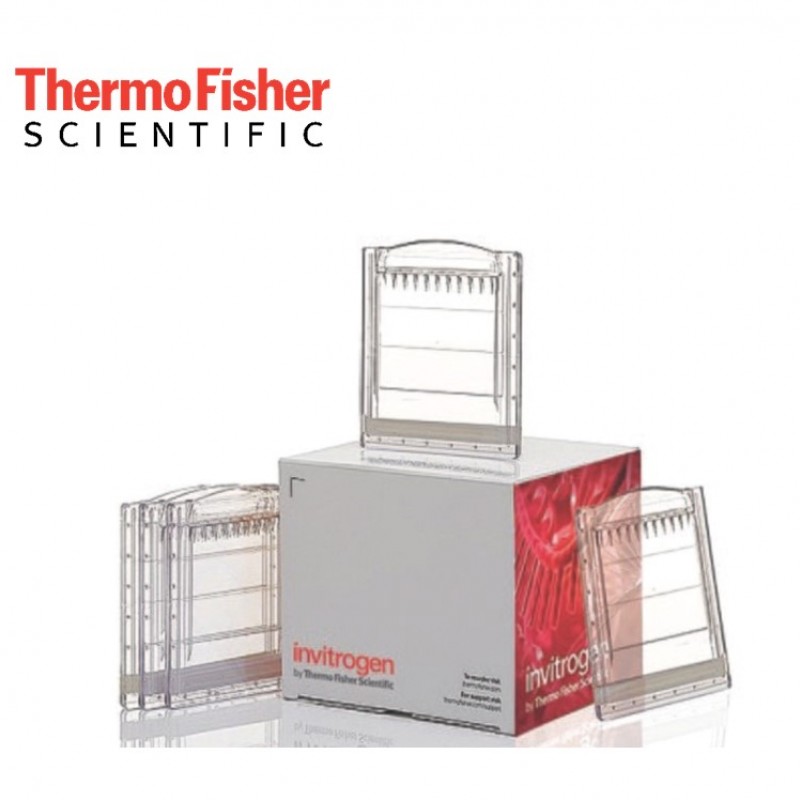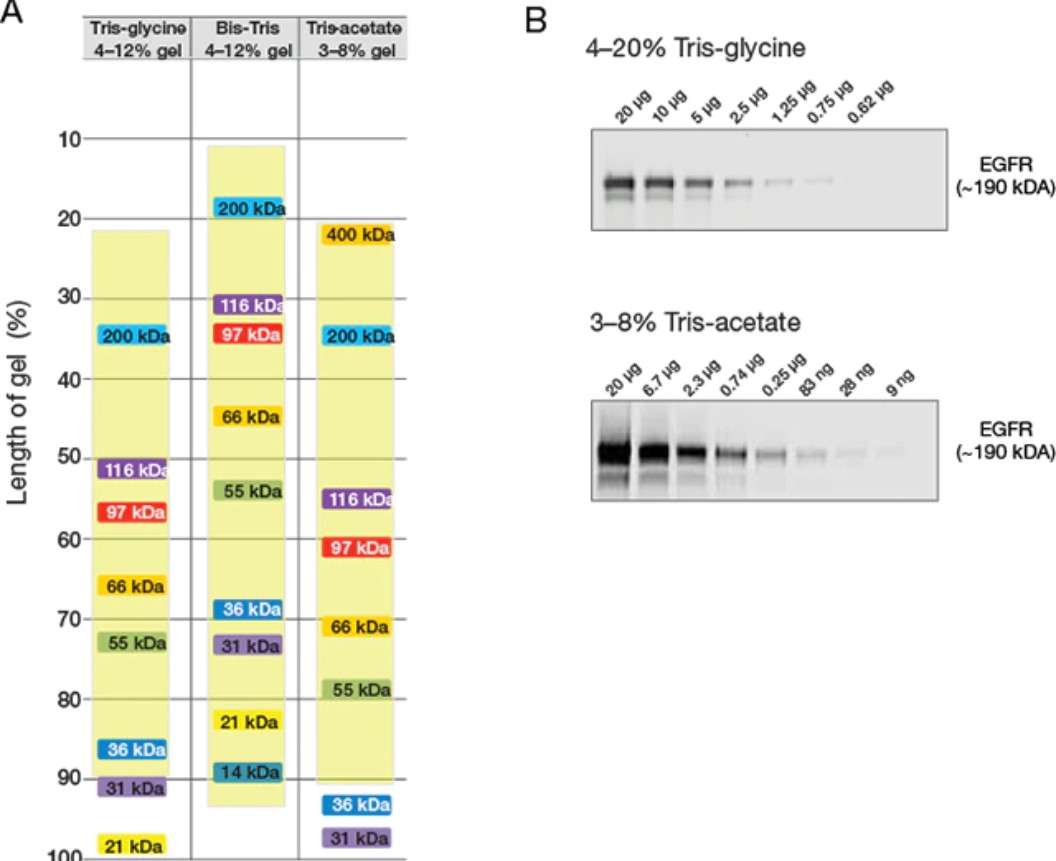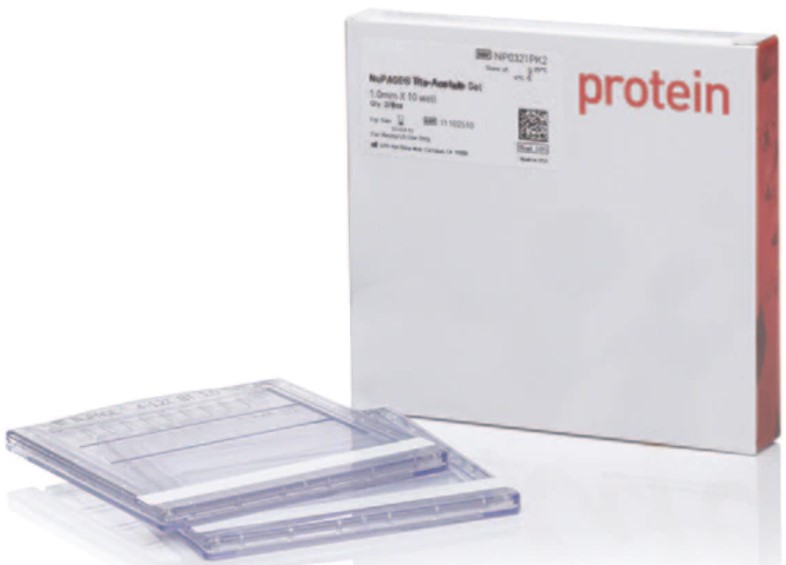
Obtain optimal separation of your high molecular weight proteins by choosing the right combination of gel and running buffer. NuPAGE Tris-Acetate protein gels come in a polyacrylamide concentration of 7% and a 3–8% gradient. Gels come in two sizes: mini (8 cm x 8 cm) or midi (8.7 cm x 13.3 cm) and either 1.0 mm (mini and midi gels) or 1.5 mm (mini gel format only) in thickness. NuPAGE Tris-Acetate gels also come in multiple well formats. Mini gels can be run using our XCell SureLock Mini-Cell or Mini Gel Tank. Midi gels can be run using our XCell4 SureLock Midi-Cell or conveniently with the Bio-Rad Criterion™ Cell using our adapters.
Reliable separation and transfer of high molecular weight (HMW) proteins is a common challenge for life science researchers. Choosing the right gel is a key factor in the successful transfer of HMW proteins. A popular general-use gel is a 4–20% Tris-glycine gel, which can effectively separate a mixed range of proteins. However, HMW proteins will be compressed into a narrow region at the top of the gel. A better option for HMW proteins is a Tris-acetate gel or a low percentage non-gradient Tris-glycine or Bis-Tris gel. When specially targeting HMW proteins, optimal transfer can be achieved with a Tris-acetate gel.
Tris-acetate gels maintain a neutral pH and separate HMW proteins with higher resolution than Bis-Tris or Tris-glycine gels. Comparison of HMW protein separation using different gel chemistries and gradients shows best separation and resolution of HMW proteins using a 3–8% Tris-acetate gel. This increased resolution leads to increased transfer efficiencies and higher sensitivity.


|
NuPAGE Tris-Acetate Gel |
|
| Available Gel Sizes | Mini: 8 cm x 8 cm (1.0 mm thick) Midi: 8 cm x 13 cm (1.0 mm thick) |
| Storage Conditions | 2–8°C |
| Shelf Life | 8 month |
| Recommended Sample Buffer | SDS-PAGE: NuPAGE LDS Sample Buffer Native-PAGE: Novex Tris-Glycine Native Sample Buffer |
| Recommended Running Buffer | SDS-PAGE: NuPAGE Tris-Acetate SDS Running Buffer Native-PAGE: Novex Tris-Glycine Native Running Buffer |
| Recommended Transfer Buffer | NuPAGE Transfer Buffer |
| Gel Chemistry | Tris-acetate |
| Available Polyacrylamide Concentrations | 7%, 3–8% |
| Seperation Range (denaturation) | 30–500 kDa |
| For Use with (Equipment) Mini Gels | Mini Gel Tank or XCell SureLock Mini-Cell |
| For Use with (Equipment) Midi Gels | SureLock Tandem Midi Gel Tank, Invitrogen XCell4 SureLock Midi-Cell veya Bio-Rad Criterion (only with adaptors) |
| Mode of Seperation | Molecular Weight |
| Application | SDS-PAGE, Native-PAGE |
| Well Type | Mini: 10, 12, 15-well Midi: 12+2, 20, 26-well |